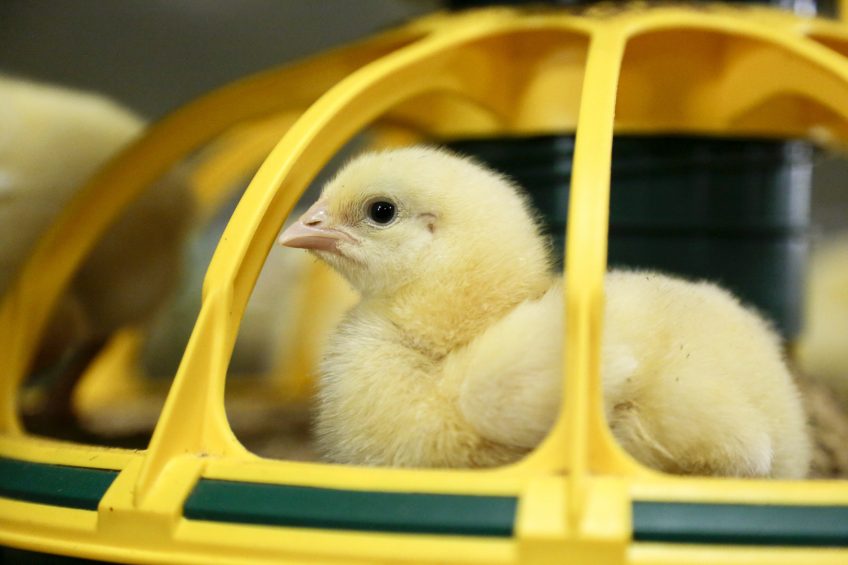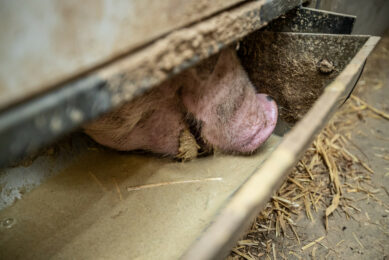Sustainably optimising gut functionality

With today’s livestock production facing the demand of less, or no, antibiotic use, there is no space for approximation. Evidence suggests that eubiotics can be great contributors to optimum gastrointestinal functionality, reducing the need for antibiotics.
Over the last few decades, the concept of gut health has been of increasing interest to animal nutritionists. However, the lack of a clear definition has re-directed scientific efforts towards gastrointestinal functionality, defined as a steady state where the microbiome and the host intestinal tract exist in symbiotic equilibrium, meaning that the welfare and performance of the animal is not constrained by intestinal dysfunction. Gastrointestinal functionality embraces factors like effective digestion, absence of gut disorders, a balanced intestinal microbiota and optimal gastrointestinal chemical and physical barriers (see Figure 1).
Figure 1 – Strategy to sustainably optimise gastrointestinal functionality and productivity of livestock.

An overall state of well-being, an effective immune system and optimum inflammatory and oxidative status are also directly related to a healthy gastrointestinal tract and are included.
A fully integrated approach needs to be adopted, in which management and health practices, together with nutrition, are key to success. Antibiotic treatment will always be necessary when animals are affected by a clinical disease, but there is still a lot of room for improvement towards a more prudent use of antimicrobial agents. When it comes to intestinal health, today’s attention has switched to three key parameters: microbiota, intestinal barrier and diet composition.
Tailored feed regimes with ingredients such as vitamins, enzymes, trace minerals, have a crucial role to play with regards to intestinal health, digestibility and immunity; especially when it comes to early life nutrition, nutrient digestibility or dietary protein level. Nevertheless, the animal diet must integrate eubiotics (organic acids, probiotics, prebiotics and essential oils) to optimise gastrointestinal functionality, which works either directly, by acting on intestinal barrier and tight junctions, or indirectly by modulating the microflora composition.
Eubiotics in the driving seat
Eubiotics are becoming increasingly popular to meet the needs of consumers seeking alternatives to conventionally-reared meat products. Introduced by DSM many years ago to encompass all these different product categories, the term ‘eubiotic’ is being used globally today. Not only are they effective additives, often able to deliver a comparable zootechnical response compared to AGPs, they also represent sustainable solutions, a new paradigm in nutrition that resonates throughout the value chain. While organic acids and essential oils directly act on gut flora modulation, leading to improved digestibility, probiotics are notably able to enhance resilience of young animals to enteric disease or stress by establishing, maintaining or even restoring a balanced gut flora. Prebiotics act specifically in the hindgut, indirectly reducing pathogen pressure, enhancing gut morphology and modulating immune response.
It is essential to properly understand the challenges that swine or poultry producers might be facing to be able to propose the most relevant and efficient eubiotic combination. Their synchronised use in feed has great potential for future animal nutrition. It is, therefore, important for nutritionists to have an overview of their mode of action, symbiotic effects and limitations.
Preventing dysbacteriosis in broilers
Necrotic enteritis (NE), acute clinical disease, bacterial enteritis (BE) and subclinical NE, also called dysbacteriosis, are the most economically important intestinal health issues in broiler production. They result in an imbalance between commensal and potentially pathogenic bacteria (Clostridium perfringens, amongst others) due to an oversupply of nutrients in the lumen, leading to interference of microbiota with mucosa and inflammation. Consequently, the gastrointestinal tract becomes less functional, contributing to poor digestion of feed and flock performance. Since the EU AGP ban, both the incidence of BE and use of medication to treat this issue have increased dramatically.
Besides good nutrition and a proper anticoccidial program, the broiler industry requires cost-effective eubiotics to prevent wet litter problems and limit antibiotic usage. The synergistic effect of certain organic acids with essential oils is well-known, and they are now widely used as gut health enhancers. A DSM concept based on the combination of specific essential oil compounds and benzoic acid, Crina Poultry Plus, is particularly effective in improving nutrient utilisation, therefore improving performance and reducing flock treatments. This positive impact was demonstrated in a large-scale field evaluation involving roughly 8 million birds together with a European broiler integrator (DSM, unpublished test). The systematic three-day antibiotic treatment was withheld from all day-old chicks. In those particular conditions the product, which is registered as a zootechnical additive in Europe, managed to maintain a high level of productivity compared to other solutions (data available on request).
This solution also turned out to be effective on bird feed conversion and weight gain versus AGPs, as demonstrated in a 2016 study in Brazil, where it was compared to avilamycin (see Figure 2). Birds were housed on reused litter to facilitate their exposure to sporulated coccidia oocysts and become infected. Experimental diets were also formulated with high level of crude protein to predispose the chicks to coccidia. Gastrointestinal functionality was optimised in broilers fed with the product, with a lower incidence of coccidiosis lesions and foot pad dermatitis recorded. Finally, the synergy between eubiotics and specific enzymes, like proteases (preventing fermentation of excess of protein in large intestine) or xylanases (reducing gut viscosity), should also be further exploited to optimise diet digestibility.
Figure 2 – Challenge broiler trial (U. Federal de Santa Maria, Brazil).

Provided a judicious selection and combination is properly done based on applications and cost-effectiveness, eubiotics can be great contributors to optimum gastrointestinal functionality. This eubiotic approach must fall within a complete feed strategy accurately involving all the other critical nutritional components including micronutrients and enzymes. It goes without saying that nutrition is only part of the solution and needs to be integrated in a sustainable holistic approach including proper vaccination, farm management and biosecurity.
References available on request






